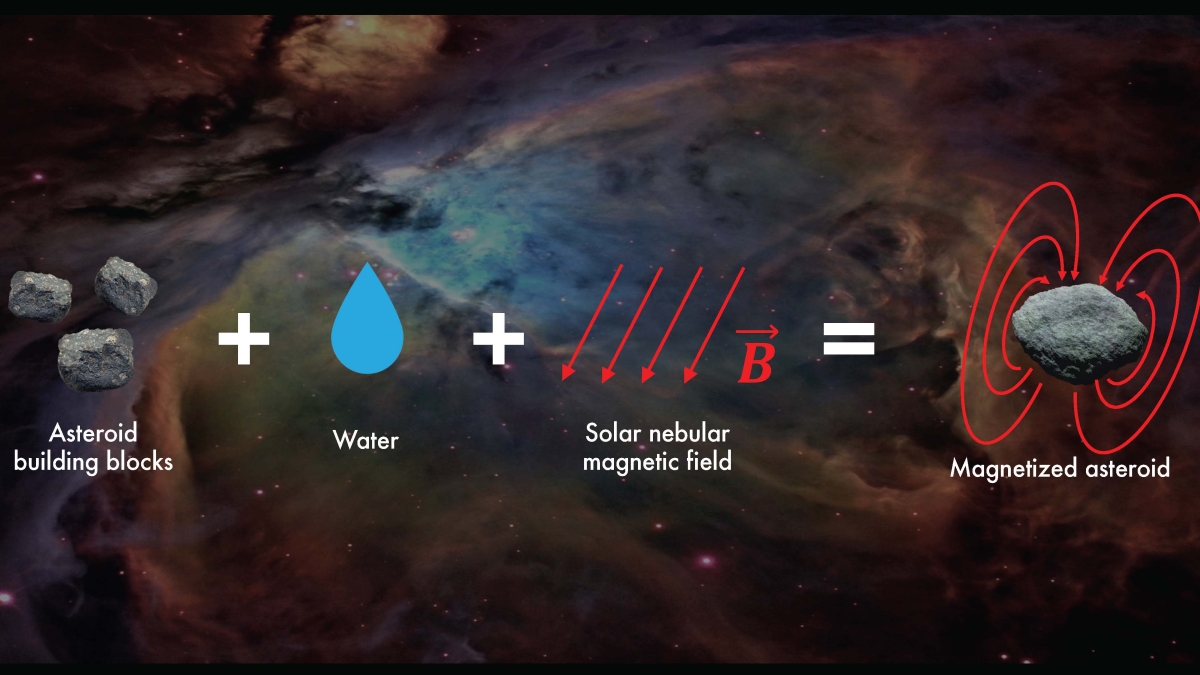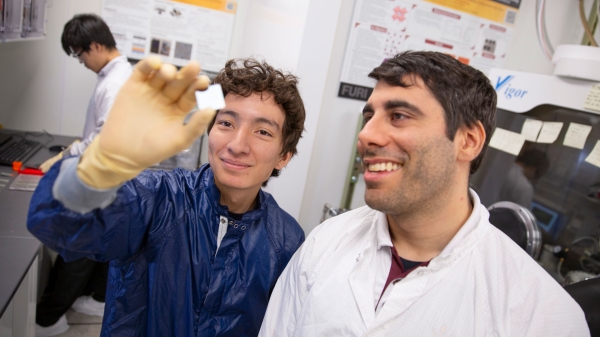ASU researchers piece together the story of planetesimal formation through magnetism

Image courtesy Sam Courville
How do planets form? What kind of evidence are planetary scientists searching for? Are there clues within 4.5-billion-year-old remnants from the beginning of the solar system to answer this question?
Scientists are putting together a story through the analysis of remnants like meteorites and asteroids — which hold much of the early solar system’s history.
In a recent study published in Nature Astronomy, a team of researchers, including Graduate Research Associate Samuel Courville, Assistant Professor Joseph O’Rourke and Foundation and Regents Professor Lindy Elkins-Tanton of ASU's School of Earth and Space Exploration, are examining the significance of residual magnetic fields detected in some carbonaceous chondrite meteorites.
Carbonaceous chondrites are part of the stony meteorite group. They are some of the oldest rocks known, about as old as the solar system itself. Clues within a chondrite’s chemical makeup can reveal details about the origins of asteroids, planets and moons at the beginning of the solar system.
Our solar system originated from an interstellar cloud of gas and dust around 4.5 billion years ago. Out of this, a gaseous disc formed around the young sun. Gas within this disc, the solar nebula, condensed into pebble sized solids, which, under the right conditions, could rapidly aggregate into planetesimals: approximately 100-km-wide building blocks of planets. Some of these planetesimals were composed of the same material as carbonaceous chondrites.
Most of us are familiar with magnets and probably have a few on our refrigerators at home. Magnets have an invisible force that attracts special types of metal. In science, a force is a push or pull in a particular direction. Magnetism is the force that makes the magnet stick to your refrigerator. The region around the magnet where this happens is called the magnetic field. Scientists believe that the solar nebula likely acted as a giant magnet and produced a strong magnetic field while planets were forming.
Courville and his team determined that if the solar nebula had a strong magnetic field, then some large asteroids, the remnants of water-rich planetesimals, should preserve a magnetic field signature that records the environment of their origin and evolution. During planetesimal formation, water helps to record the magnetic field signature by altering some of the rock within the planetesimal into magnetic minerals capable of preserving the signature throughout the lifetime of the solar system. The carbonaceous chondrite meteorites found on Earth that have magnetic signatures could be pieces from these planetesimals.
“Meteoriticists have known for a while that some meteorites were exposed to a strong magnetic field while they were still in space apart of an asteroid. We set out to discover how that might happen,” Courville said. “What we discovered is that magnetic signatures in some meteorites are a natural consequence of when asteroids formed in the magnetic cloud of dust and gas surrounding the sun at the dawn of the solar system.”
The novelty of the study is that it is applying knowledge derived from meteorite studies to assert that most large, water-rich asteroids should present a magnetic field signature that tells us more about their origin and evolution.
“The work can serve as a basis for the formulation of future spacecraft missions,” said co-author Julie Castilo-Rogez, a planetary scientist at NASA’s Jet Propulsion Laboratory who specializes in water-rich objects. “It is also remarkable work in terms of modeling the magnetic field of complex interior structures that reflect a wide range of possible evolutions.”
Courville and his team hope that their work will encourage designing a spacecraft with a magnetometer to send to asteroids. In particular, they argue a spacecraft should search for magnetic field signatures on an asteroid named Pallas, which, despite being the third largest asteroid, has never been visited by spacecraft before.
"NASA should send a spacecraft with a magnetometer to every asteroid, especially the big ones," O’Rourke said.
Other contributing authors on this study are Roger R. Fu of the Department of Earth and Planetary Sciences at Harvard University and Rona Oran and Benjamin P. Weiss of the Department of Earth, Atmospheric and Planetary Sciences at MIT.
More Science and technology

ASU student researchers get early, hands-on experience in engineering research
Using computer science to aid endangered species reintroduction, enhance software engineering education and improve semiconductor…

ASU professor honored with prestigious award for being a cybersecurity trailblazer
At first, he thought it was a drill.On Sept. 11, 2001, Gail-Joon Ahn sat in a conference room in Fort Meade, Maryland.…

Training stellar students to secure semiconductors
In the wetlands of King’s Bay, Georgia, the sail of a nuclear-powered Trident II Submarine laden with sophisticated computer…